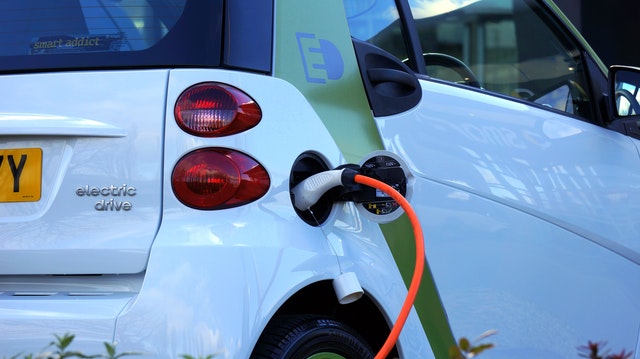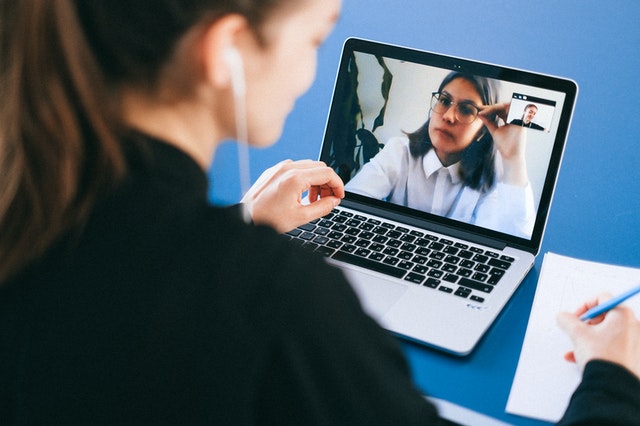10 ways governments can help COVID-19 recovery and act on climate change
This is how to put climate action at the centre of COVID-19 recovery plans.
A s countries worldwide have started easing lockdowns imposed to curb the coronavirus pandemic, what key policy changes could get economies moving again, take advantage of what we’ve learned, and set us up for another big crisis – climate change?
Here are some ideas being developed and tested:
1. Set up 5G and fibre optic broadband
Many people now know it’s possible to work from home and hold meetings virtually – but fast and reliable broadband and mobile phone services make that far easier.
With streets quieter during coronavirus lockdowns, now is the time to invest in installing more broadband cable, getting 5G systems working and laying the groundwork for a digital future, say officials from Milan’s mayor to Chris Stark, chief executive of the UK’s Committee on Climate Change.
2. Give road space to non-motorised travel
Cities from London to New York, Barcelona and Milan aim to expand space allotted for cyclists and pedestrians, as more people head back to work, in a bid to avoid crowded public transport systems and packed sidewalks.
Switching more road space to non-motorised travel could help hold onto the cleaner air many cities have enjoyed during lockdowns and encourage more people to abandon petrol or diesel cars for healthier alternatives, officials say.

Many cities are expanding space for cyclists and pedestrians
3. More fossil fuel taxes
Oil prices have plunged as Saudi Arabia and Russia battle over which big producers should cut supply most to shore up prices. Low prices and a growing glut of stored oil risk delaying the shift to clean energy needed to meet climate goals.
Levying new carbon taxes on fossil fuels – and removing subsidies for oil, gas and coal – could provide much-needed income for cash-strapped cities, states and countries as coronavirus shutdowns slash other revenues, including sales tax.
“It’s quite a good time to use a tax on fossil fuels,” noted Britain’s Stark.
4. Set up electric car charging systems
A switch to electric vehicles is already underway, but easy access to charging stations is needed to make it happen faster. Now is the time to invest in getting that network in place, say officials including the UK’s Stark.
In the United States, investing in long-range transmission lines, to connect more wind and solar farms to the grid systems of adjoining states, also could help ensure the power to charge new electric cars and trucks is green, said Dan Lashof of the Washington-based World Resources Institute.

Accessible charging stations will help people adopt electric cars faster.
5. Green public transport
As governments mull where to spend economic stimulus funding, using low-interest borrowing to buy electric buses or make public transport more effective and efficient could be a good way to get people out of cars – and maintain at least some of the air-quality improvements seen during virus lockdowns.
“There’s a massive opportunity that we must take to rebuild the economy in a way that’s truly sustainable,” said David Miller, director of international diplomacy for the C40 network of cities pushing for climate action.
6. Invest in climate-resilient infrastructure
Low interest rates and the need for government spending also mean it’s a great time for infrastructure projects that could shield us from climate threats, said Betsy Otto of the global water programme at the World Resources Institute.
Building seawalls, dikes or other protection against growing risks from flooding and sea-level rise could save about $250 per $1 spent in India by 2050, she said.
“It’s a huge return, and it creates jobs and adds to local economies,” said Otto, who led development of Aqueduct, a global online water risk assessment and mapping tool.
7. Plant trees
Pakistan is paying more than 63,000 out-of-work labourers to plant tree saplings as part of a broader “10 Billion Tree Tsunami” push to rebuild depleted forests, battle climate change and provide a virus-era income to its poor.
Similar tree restoration efforts – to create jobs and enlarge forests – are being discussed in the United States, where planting could create 150,000 jobs, said Lashof of the World Resources Institute.
Social distancing is relatively easy while planting trees, officials note, and as trees grow and absorb carbon dioxide, they help stabilise rainfall and keep climate change in check.
8. Continue home working
During COVID19 shutdowns, some office-based employees have discovered they can work effectively at home. Putting policies in place to encourage that to continue after the crisis, where possible, could hold down emissions from commuting, better maintain social distancing and ease pressure on overloaded public transport systems, experts say.
9. Reduce business travel
Virtual meetings can work, we have learned, even if they aren’t always as satisfying or effective as gathering in person.
With the necessary technology now tested and proven, companies, governments and other groups committed to reducing emissions could commit now to holding a percentage of their future events and discussions online.
“This is a very different world. I’m hoping we will learn a lesson from it,” said David King, Britain’s former chief scientist and special representative for climate change, who said he was getting more done instead of jetting off to meetings.

Encouraging online meetings will reduce the need to travel for work.
10. Increase social security
The coronavirus pandemic and restrictions in response to it have made clear how economically vulnerable many people are – not just the poorest but also some who might not previously have seen themselves at risk.
Strengthening systems now to move cash and other support to vulnerable people – in richer countries as well as the poorest ones – could build resilience to deal with this crisis and future shocks too, experts say.
“In both COVID19 and climate change, it’s the poorest and the vulnerable who suffer most,” noted John Roome, the World Bank’s sustainable development director for South Asia.
The ideas presented in this article aim to inspire adaptation action – they are the views of the author and do not necessarily reflect those of the Global Center on Adaptation.